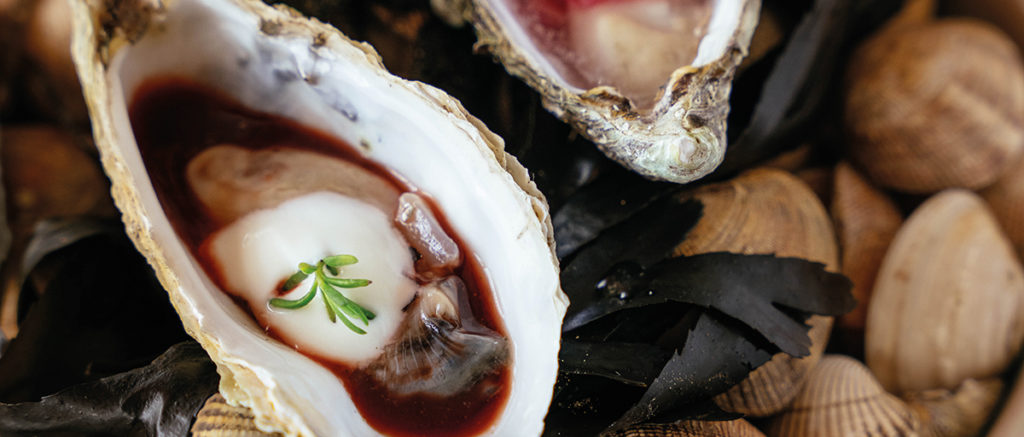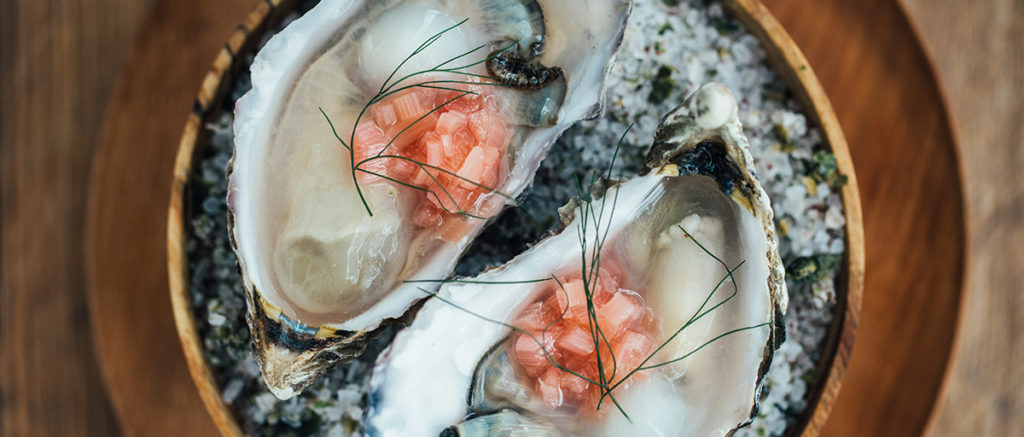

The World is Our Oyster
As we look forward to the start of the oyster season in September, I take a look at its venerable history and how it has influenced my Cornish restaurants.
Words by Jude Kereama
Kota means Oyster in Mãori. In fact, a kota is a very large oyster in New Zealand. Being brought up Mãori in New Zealand meant there was always shellfish as part of our diet and culture. When I was opening my first restaurant in Porthleven, I wanted to pick a name that was Mãori, easy to pronounce and something that I loved and would use in the kitchen. I trawled the Mãori dictionary to find a possible name for the restaurant and out popped the word kota. It was a perfect match. You always find oysters on our menu and they have come in different forms over the years. We have served them fresh with a variety of dressings and cooked either in a tempura batter; wrapped in potato strands and deep fried till crisp; poached, pickled and even barbecued. I absolutely love oysters all year round.
Oysters have been eaten along the coast for hundreds of years. In Roman times, the native oyster was fished in the UK waters and exported to Italy. They say Julius Caesar was so mad for the oysters that he would send for them and pay for their weight in gold. In the 19th century, oysters were very cheap and plentiful and were popular with all the different classes of people. The poor saw them as a cheap source of protein and would introduce them to beef pies and stews to fill out the dish. They were eaten at all times of the day every day until they were overfished, which led to a huge decline in numbers. Subsequently, oyster prices increased due to scarcity and it is now seen as a luxury ingredient.
In September, the native oyster season starts on the first of the month and lasts until the end of April. The native oyster (Ostrea edulis) is a flatter rounder oyster than the Pacific oyster (Crassostrea gigas). I always find the native oysters have a better crunchy texture, and a more ‘zincy’ flavour in the colder months, making them a true delicacy. We even have oyster festivals in Cornwall held in honour of Falmlouth’s mighty native oyster.
Native oysters have been harvested from the Fal Estuary and Helford River for over 200 years and is the last viable native oyster fishery in the United Kingdom. The sustainability of this fishery has been managed well; only lightweight dredges are allowed to harvest the oysters, towed by traditional sailing or rowing boats, ensuring that stocks remain healthy for the future.
Pacific oysters are a non-native species as the name suggests and originally came from Japan. They are much more commonly found around the shores of Cornwall and have really flourished here. This makes them super sustainable and a great healthy source of protein. We must try our best to eat more. We have been known to take oysters for the restaurants from the Helford River, the Fal River, Fowey and Porthilly, which goes to prove how well spread they are, and the great thing about them is that they are available all year round. There are said to be Pacific oysters in the Fal Estuary which are so gigantic that they are certainly too big to shuck and eat fresh. I’ve been thinking about ways of using these giants and one idea is to start making our own oyster sauce! I love the fact that oysters have been entwined into the culture of Cornwall through necessity and tradition. They deserve to be celebrated as an essential taste of coming to Cornwall on holiday. If you haven’t eaten them before, come try them at one of the Kotas where I am sure we’ll have a flavour or style for you.
Jude Kereama is chef patron of Kota and Kota Kai in Porthleven.
Kota & Kota Kai
Harbour Head, Porthleven TR13 9JY
01326 562407 / 01326 727707
www.kotarestaurant.co.uk
www.kotakai.co.uk

